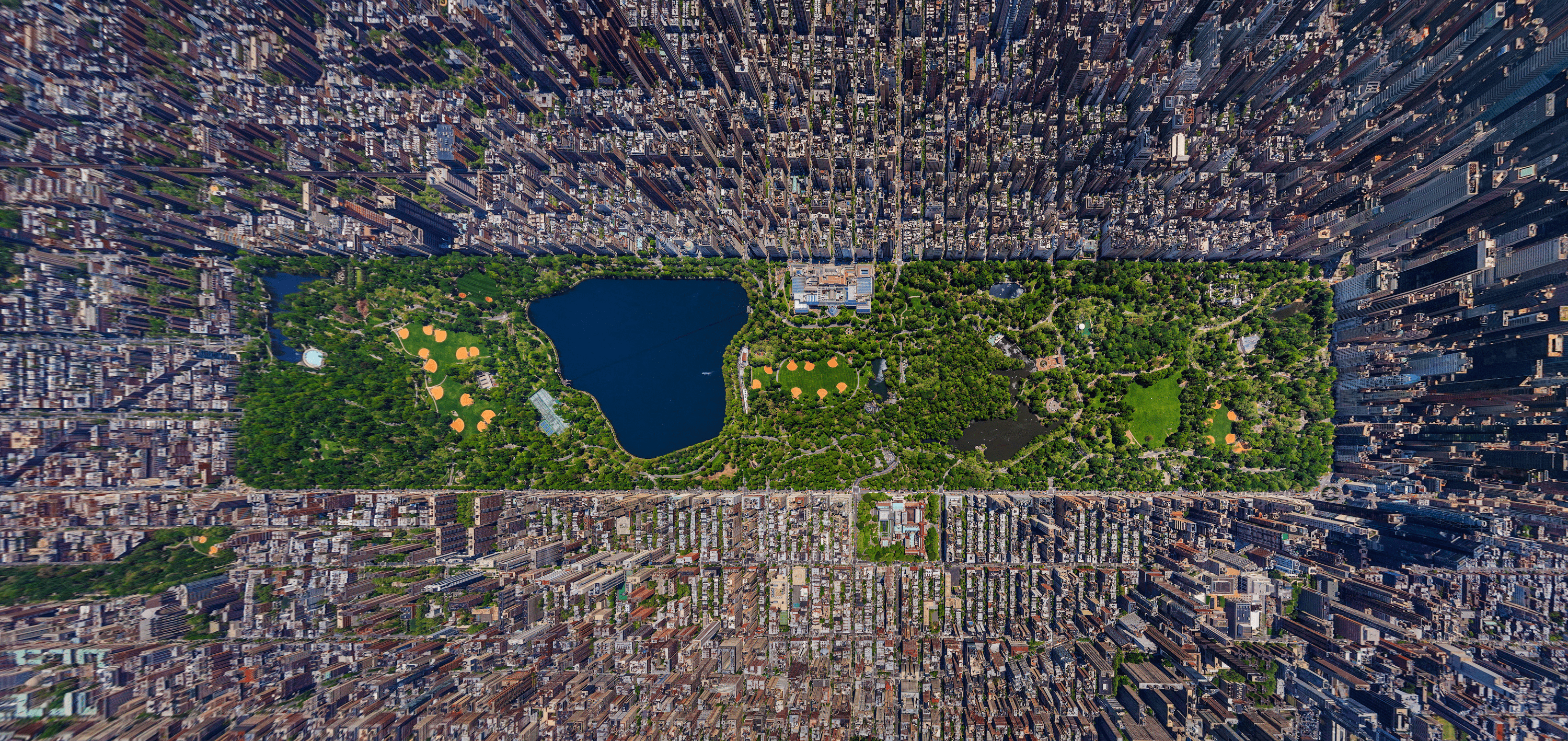Evaluating the Geometric Properties of 2D Urban Layouts Using a Data-Driven, Deep Learning Approach
Problem Statement
By 2050, more than seven billion people will live in cities - nearly double today’s urban population. There is an urgent need to scale good urban layouts. But urban planners still do not have the tools to objectively measure, compare and evaluate urban layouts. Good urban design is difficult to scale.
Urban planners widely use geometric properties to understand cities, but current methods of quantifying city geometry are very limited. To objectively measure, compare and evaluate urban designs, urban planners need a standard metric to quantify the geometric properties of 2D urban layouts.
Research Objective

AIRPANO Sergey Semonov, Manhattan New York City
- How can we develop a standard metric to quantify the geometric properties of city layouts?
- How can we objectively classify urban typologies based on their complex geometries?
- How can we generate composite urban layouts that blend distinct urban layouts?
Project Overview

- Data preparation and model engineering. Encode geometric features of a geo-referenced dataset of Manhattan urban layouts using the AETree neural network.
- Representation Learning. Learn and extract features that faithfully represent urban layout geometries using the encoding.
- Urban planning applications. Develop three proof-of-concept urban planning applications using these features.
Conclusion
The future of urban planning is in computational design, where data-driven methods are used to encode city geometry for new urban planning applications. Rapid urbanization demands scalable ways to generate well-designed urban layouts. But this requires a coherent way of describing the complex geometry of urban layouts - even before we normatively evaluate whether a particular layout is appropriately designed.
Prior work sought to manually enumerate basic geometric features, failing to capture the diversity and complexity of urban layouts. By leveraging recent advancements in deep learning, we have proposed a standard metric that faithfully represents the spatial structure of urban layouts. Urban planners can use this standard metric to classify, measure and generate new urban layouts. We showcase the utility of this standard metric in three proof-of-concept urban planning applications: (1) classifying urban layout typologies, (2) measuring neighborhood urban composition, (3) generating composite layouts.
